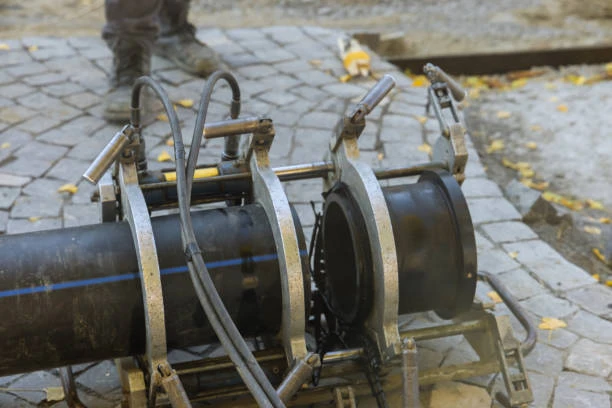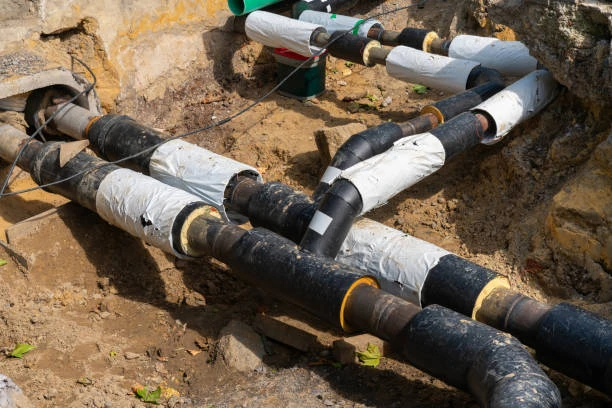In an era of rapid industrial growth and increasing demand for high-quality infrastructure, Mexichem’s acquisition of Dura-Line Corp. marks a significant milestone in the HDPE pipe industry. This strategic move not only bolsters Mexichem’s market presence but also enhances its capabilities in producing HDPE pipes and fittings. This article explores the implications of this acquisition, the advantages of HDPE pipes, and the critical role of pipe press fittings in modern piping systems.
Understanding HDPE Pipes
High-Density Polyethylene HDPE pipe are increasingly favore in various industries due to their numerous advantages. Known for their strength, flexibility, and resistance to corrosion, HDPE pipe are widely use in applications ranging from water distribution and sewage systems to gas and industrial applications. Their longevity and durability make them a cost-effective solution for infrastructure projects.

The Significance of Mexichem’s Acquisition
Mexichem, a global leader in the production of chemical and plastic products, recognized the growing demand for HDPE pipes and the need for advanced manufacturing capabilities. By acquiring Dura-Line Corp., a well-respected manufacturer of HDPE products, Mexichem positions itself to meet this demand more effectively. Here are some key points to consider regarding this acquisition:
- Enhanced Production Capacity: Dura-Line’s state-of-the-art manufacturing facilities will increase Mexichem’s production capabilities, allowing for higher volumes of HDPE pipe and fittings.
- Diversification of Product Offerings: With Dura-Line’s extensive product line, Mexichem can now offer a broader range of HDPE solutions, catering to various sectors such as telecommunications, water management, and energy.
- Improved Technological Innovations: Dura-Line is know for its cutting-edge technology in pipe extrusion and product design. Mexichem can leverage these innovations to improve efficiency and quality in its manufacturing processes.
- Strengthened Market Position: The acquisition enables Mexichem to expand its footprint in the North American market, enhancing its competitiveness against other major players in the industry.
The Role of Pipe Press Fittings
In conjunction with HDPE pipes, pipe press fittings are crucial components that facilitate efficient and reliable piping systems. Here’s why they are essential:
- Quick and Secure Connections: Pipe press fittings allow for fast and secure connections between HDPE pipes, eliminating the need for traditional welding or heat fusion methods. This saves time and reduces labor costs.
- Durability and Reliability: These fittings create strong, leak-proof connections that can withstand high pressures and varying temperatures, making them ideal for demanding applications.
- Versatile Applications: Pipe press fittings can be use in a wide range of installations, from residential plumbing to large-scale industrial systems, making them a versatile choice.
Advantages of HDPE Pipes
The increasing adoption of HDPE pipes in various applications can be attribute to several key advantages:
- Corrosion Resistance: HDPE pipes are inherently resistant to corrosion, making them suitable for transporting various fluids.
- Lightweight and Flexible: The lightweight nature of HDPE pipes makes them easy to handle and install.
- Cost-Effective: While the initial investment in HDPE pipes may be higher than traditional materials.
- Environmental Benefits: HDPE is a recyclable material, making it a sustainable choice for modern infrastructure projects. The reduced environmental impact is a significant consideration for many businesses today.
The Future of the HDPE Pipe Market
The acquisition of Dura-Line by Mexichem is a clear indication of the growing demand for HDPE pipes in various sectors. As infrastructure projects expand globally, the need for reliable and efficient piping solutions will only increase. Key trends influencing the HDPE pipe market include:
- Technological Advancements: Continuous improvements in pipe manufacturing technology, including the development of more sophisticated pipe press fittings,
- Regulatory Standards: Stricter environmental regulations and standards for infrastructure projects will drive the demand for high-quality HDPE pipes that meet safety and sustainability criteria.
- Urbanization: Rapid urbanization and population growth necessitate the expansion and upgrading of water and sewage systems
Overcoming Challenges in the Industry
While the future looks promising for HDPE pipes and fittings, challenges remain. Here are some common issues and potential solutions:
- Market Competition: As more companies enter the HDPE market, competition intensifies. Companies must focus on innovation and customer service to maintain their competitive edge.
- Material Sourcing: Securing high-quality raw materials is crucial for producing reliable HDPE pipes. Establishing strong relationships with suppliers can mitigate this issue.
- Installation Expertise: The successful implementation of HDPE systems requires trained personnel. Investing in workforce training programs can enhance installation efficiency and reduce errors.
Conclusion
Mexichem’s acquisition of Dura-Line Corp. is a strategic move that will undoubtedly reshape the landscape of the HDPE pipe industry. By enhancing production capabilities and expanding product offerings, Mexichem is well-positione to meet the growing demand for high-quality HDPE solutions. The integration of advanced pipe press fittings with HDPE pipes will further enhance the reliability and efficiency of piping systems across various applications.
Frequently Asked Questions (FAQ)
- What are HDPE pipes?
- High-Density Polyethylene (HDPE) pipes are durable, flexible pipes widely used for water distribution, sewage.
- What is the significance of Mexichem’s acquisition of Dura-Line?
- The acquisition enhances Mexichem’s production capacity, diversifies its product offerings, and strengthens its market position in the HDPE pipe industry.
- How do pipe press fittings work?
- Pipe press fittings create quick, secure connections between pipes without the need for welding or heat fusion, allowing for faster installations and reliable, leak-proof joints.
- What are the advantages of using HDPE pipes over traditional materials?
- HDPE pipes offer corrosion resistance, lightweight flexibility, cost-effectiveness, and environmental sustainability, making them a superior choice for many applications.
- What challenges does the HDPE pipe industry face?
- Key challenges include market competition, securing quality materials, and ensuring installation expertise, all of which can be addresse through innovation and workforce training.


















